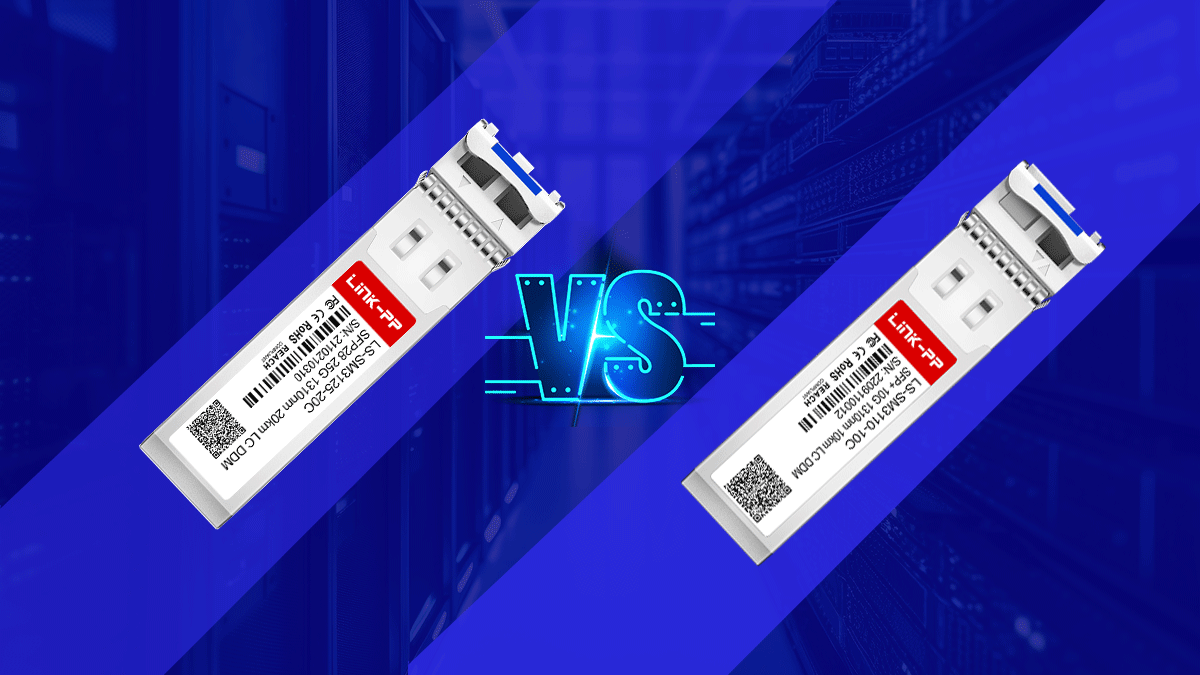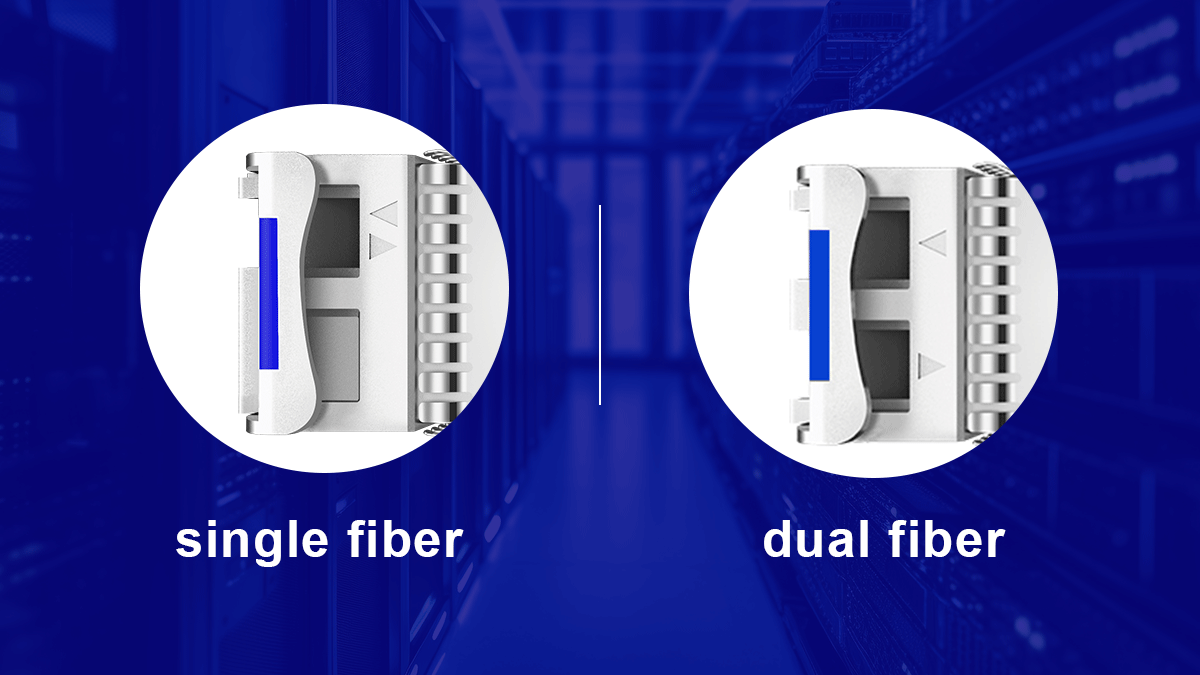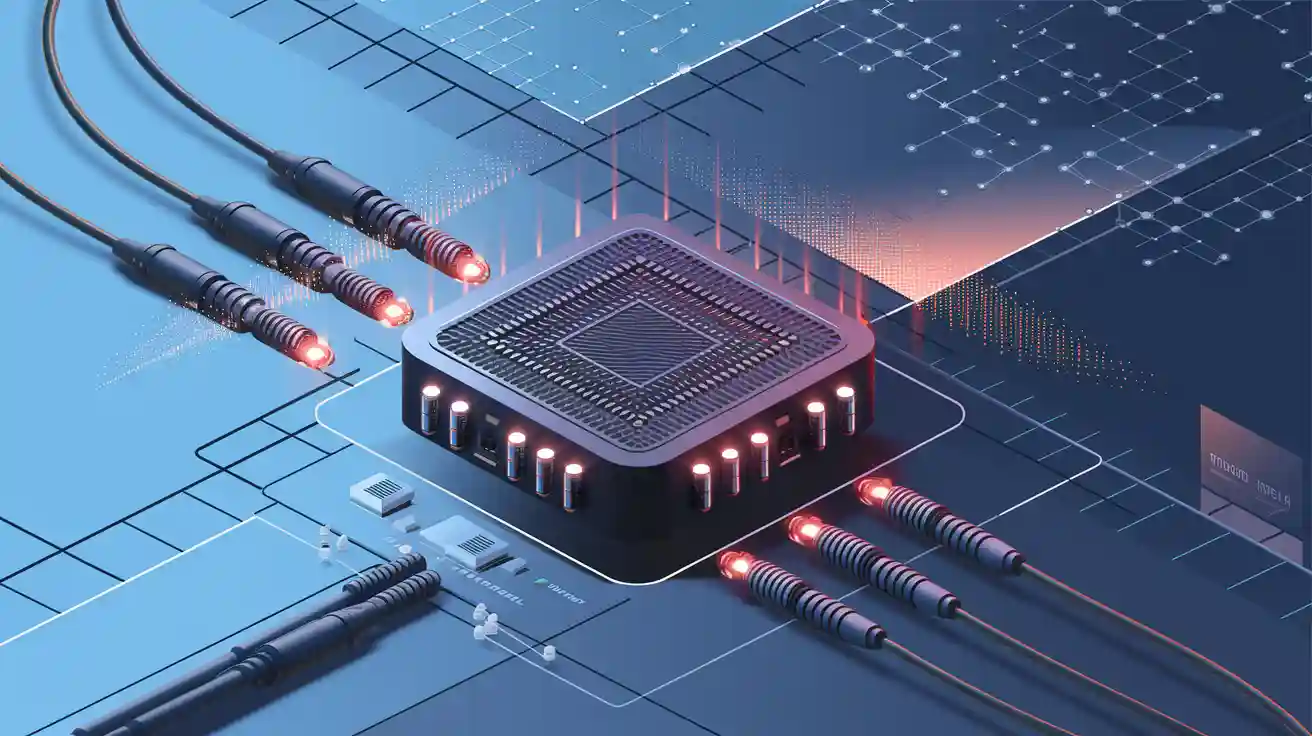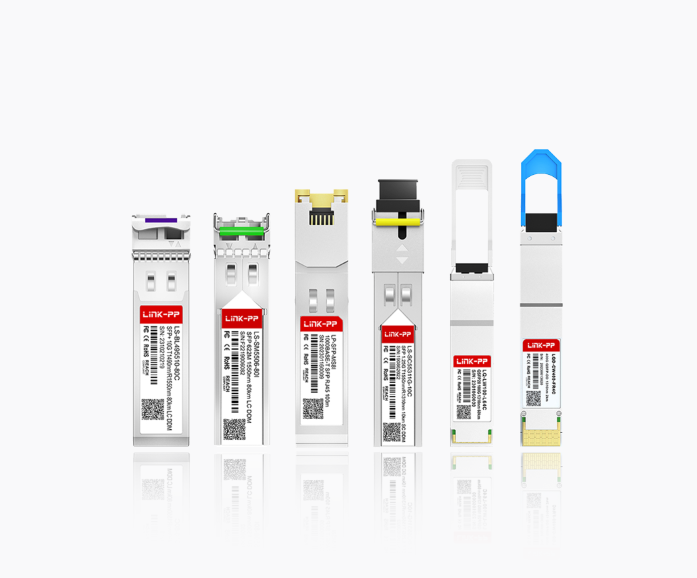
In fiber optic communication systems, optical transceivers play a critical role in ensuring seamless data transmission. Among these devices, single-fiber modules (BiDi) and dual-fiber modules (standard duplex) are two primary categories. Understanding their differences is essential for network designers and IT professionals aiming to optimize performance, cost, and scalability. This article breaks down their technical distinctions, use cases, and why LINK-PP are trusted for reliable optical transceiver solutions.
Key Takeaways
Single fiber transceivers use one fiber to send and receive data. They are cheaper and good for networks with few fibers.
Dual fiber transceivers use two fibers, giving more speed and stability. They work best for big networks and heavy data use.
Pick single fiber transceivers if space or fibers are limited. They are great for city networks or 5G systems.
Choose dual fiber transceivers if your network needs strong performance. They are perfect for data centers and older setups.
Think about your network's needs and budget before deciding. This helps you get the best performance and save money.
What is a Single Fiber Optical Transceiver?
A single fiber optical transceiver, known as Bidi transceiver, allows bidirectional communication over a single optical fiber. This design uses two different wavelengths for transmitting and receiving signals. For example, one wavelength might handle transmission while another manages reception. This approach reduces the number of fibers required, making it a cost-effective solution for networks with limited fiber infrastructure.
Single fiber transceivers often use a simplex LC interface, which simplifies installation and minimizes cabling complexity. These transceivers are ideal for metropolitan area networks or 5G fronthaul applications where fiber resources are scarce. By optimizing fiber usage, they help you achieve efficient network performance without compromising quality.
What is a Dual Fiber Optical Transceiver?
A dual fiber optical transceiver uses two separate fibers—one for transmitting and the other for receiving data. This design ensures higher transmission stability and supports single-wavelength bidirectional communication. Dual fiber transceivers typically feature a duplex LC interface, making them compatible with standard network designs.
These transceivers are well-suited for long-distance backbone networks where abundant fiber resources are available. They provide robust performance and are often preferred for applications requiring high bandwidth and reliability. The dual fiber setup ensures minimal signal interference, making it a reliable choice for large-scale deployments.
Characteristic | Dual Fiber Optical Module | BIDI Optical Module |
|---|---|---|
Fiber Requirements | Dual-fiber bidirectional (duplex LC interface) | Single-fiber bidirectional (simplex LC interface) |
Wavelength Design | Single wavelength bidirectional independent channel | Dual wavelength multiplexing (such as 1310nm/1490nm) |
Applicable Scenarios | Long-distance backbone network with abundant optical fiber resources | Metropolitan area networks with limited fiber resources and 5G fronthaul |
Cost-effectiveness | Higher transmission stability | Save fiber and cabling costs |
How Does a Bidi Transceiver Work?
A Bidi Transceiver, short for bidirectional transceiver, operates by transmitting and receiving data over a single fiber using two distinct wavelengths. For instance, one transceiver might transmit at 1310nm and receive at 1490nm, while the other does the reverse. This wavelength division multiplexing (WDM) technology enables simultaneous bidirectional communication, optimizing the use of available fiber.
Component | Functionality |
|---|---|
Transceiver A | Receives at 1490nm and transmits at 1310nm |
Transceiver B | Receives at 1310nm and transmits at 1490nm |
Wavelength Division | Enables simultaneous transmission and reception |
Multiplexing (WDM) | of different wavelengths over a single fiber |
This innovative design makes Bidi transceivers an excellent choice for networks aiming to maximize efficiency while minimizing infrastructure costs.
Key Differences Between Single Fiber and Dual Fiber Transceivers

Here’s a structured table summarizing the key differences between Single Fiber and Dual Fiber Transceivers
Category | Single Fiber Transceivers | Dual Fiber Transceivers |
|---|---|---|
Technology & Design | Uses WDM (Wavelength Division Multiplexing) to enable bidirectional communication over a single fiber with two distinct wavelengths (e.g., 1310nm/1490nm). | Uses two separate fibers for transmit (Tx) and receive (Rx). Simpler design, no wavelength multiplexing required. |
Ports & Connectivity | Simplex LC interface (single port). Reduces cable clutter and space requirements. | Duplex LC interface (two ports: Tx and Rx). Aligns with standard network designs and supports higher bandwidth. |
Wavelengths & Signals | Bidirectional transmission via two wavelengths on a single fiber. Example: 1310nm (Tx) and 1490nm (Rx). | Single wavelength per fiber. One fiber for Tx, another for Rx. Minimizes signal interference and ensures stability over long distances. |
Cost & Pricing | Reduces fiber usage costs (ideal for limited fiber availability). Higher transceiver cost due to WDM technology. | Lower per-transceiver cost (simpler design). Requires more fibers, which may increase infrastructure costs. |
Use Cases | Best for: | Best for: |
Key Advantages | Maximizes fiber efficiency, space-saving, ideal for fiber-scarce environments. | Higher bandwidth potential, simpler deployment, lower transceiver cost, and reduced signal interference. |
Limitations | Higher transceiver cost, limited to bidirectional wavelength pairs. | Requires more fiber strands, less efficient for fiber-constrained networks. |
Notes for the Table:
WDM: Enables bidirectional data flow on a single fiber, but adds complexity.
Simplex vs. Duplex: Single fiber uses one port, dual fiber uses two ports.
Cost Trade-off: Single fiber saves fiber costs but has pricier transceivers; dual fiber has cheaper transceivers but higher fiber usage.
Applications: Choose based on fiber availability, bandwidth needs, and distance requirements.
Why Choose LINK-PP?

As a leading provider of optical transceiver solutions, LINK-PP delivers both single-fiber and dual-fiber modules tailored to diverse needs. Their BiDi transceivers, such as the LS-BL273310-10C, combine cutting-edge WDM technology with robust signal integrity, while duplex modules like the LQ-M85100-SR4C ensure low latency for hyperscale data centers.
For organizations balancing cost and performance, LINK-PP’s optical transceivers offer:
Compliance: MSA-compliant designs for seamless integration.
Flexibility: Support for CWDM, DWDM, and standard wavelengths.
Reliability: Rigorous testing for industrial and commercial environments.
Conclusion
Understanding the differences between single fiber and dual fiber transceivers helps you make informed decisions. Single fiber transceivers optimize fiber usage and simplify cable management, making them ideal for networks with limited resources. Dual fiber transceivers, on the other hand, offer higher bandwidth and better compatibility with standard designs, making them suitable for large-scale deployments.
When choosing, consider your budget, network size, and application needs. Single fiber transceivers work best for cost-conscious setups with limited fiber. Dual fiber transceivers excel in high-bandwidth environments. Remember, the right choice depends on your specific requirements rather than one being universally better.
FAQ
What is the main difference between single fiber and dual fiber transceivers?
Single fiber transceivers(Bidi Transceivers) use one fiber for bidirectional communication, while dual fiber transceivers use two fibers—one for transmitting and one for receiving. This difference impacts fiber usage, cost, and bandwidth potential.
Which type of transceiver is better for limited fiber infrastructure?
Single fiber transceivers are better for limited fiber infrastructure. They optimize fiber usage by enabling bidirectional communication over a single fiber, making them cost-effective and efficient in such scenarios.
Are dual fiber transceivers compatible with standard network setups?
Yes, dual fiber transceivers align well with standard network designs. Their duplex LC interface ensures seamless integration into existing infrastructures, making them a reliable choice for traditional setups.
Do single fiber transceivers support high-speed communication?
Yes, single fiber transceivers support high-speed communication. They use wavelength division multiplexing (WDM) technology to handle bidirectional traffic efficiently, even in high-speed networks like 5G fronthaul.
How do I choose between single fiber and dual fiber transceivers?
Consider your network's needs. Choose single fiber transceivers for cost efficiency and limited fiber availability. Opt for dual fiber transceivers if you need higher bandwidth and compatibility with standard designs.
See Also
The Importance Of Digital Monitoring In Optical Transceivers




